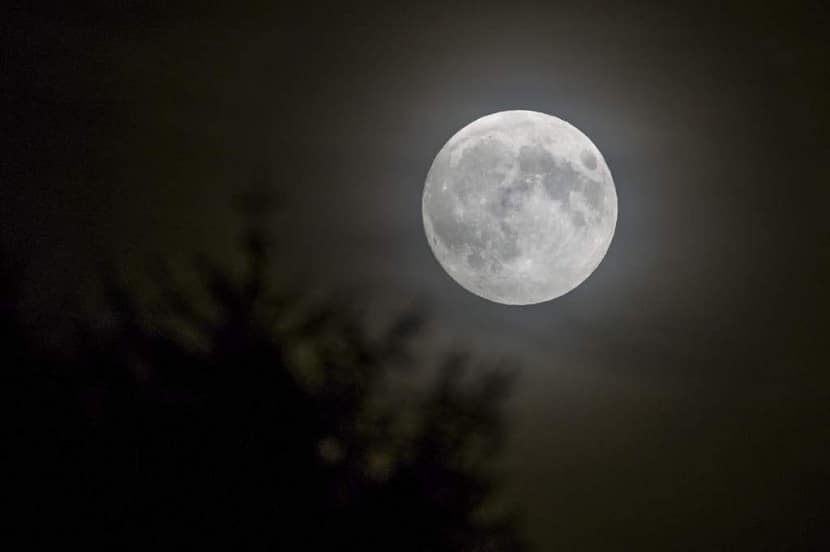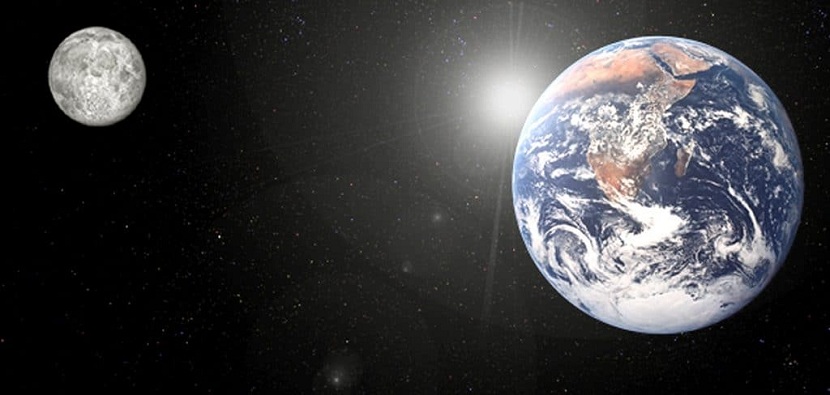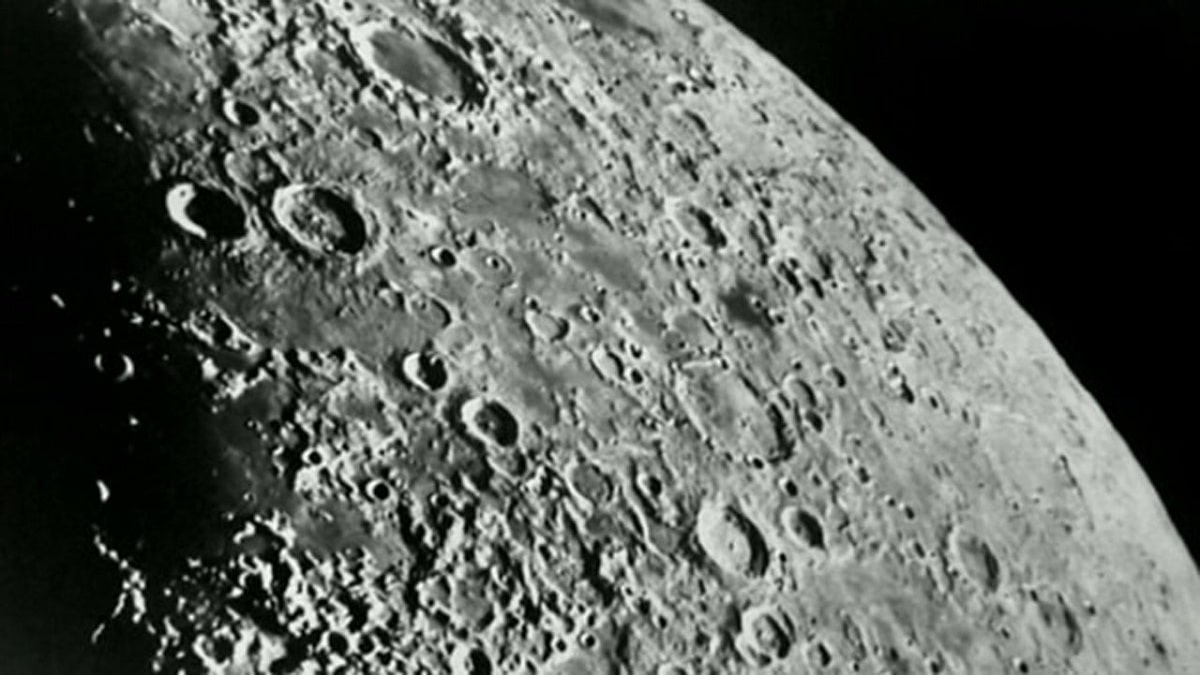
Our planet has a celestial body orbiting over it known as the moon. However, there is still we see during the nights, many people do not really know what is the moon. We are talking about our satellite that causes the gravitational forces that originate the tides and other aspects on Earth. Our satellite has unique characteristics and different movements that are quite interesting to know.
Therefore, we are going to dedicate this article to tell you what the moon is, what its characteristics, main movements and its craters are.
What is the moon

The moon is the natural satellite of the earth and the only satellite owned by the earth. Of course, it is a rocky celestial body without rings or satellites. There are several theories to explain its formation, but the most accepted is that its origin occurred about 4,5 million years ago, after a Mars-like object collided with Earth. The moon formed from these fragments and, after 100 million years, the molten magma crystallized and formed the lunar crust.
The moon is about 384 kilometers from the earth. After the sun, it is the brightest celestial body seen from the surface of the earth, although its surface is actually dark. It spins around the earth in 400 Earth days (27 days or 27 hours) and spins at the same speed. Because it rotates synchronously with the earth, the moon has the same face as her. Due to current technology, it is well known that the "hidden faces" have craters, depressions called thalassoids, and have no ocean.
Observations of the moon are as old as humans. His name appears in many civilizations and is also part of their mythology. It has an important influence on the cycle of the Earth: it regulates the movement of the Earth on its axis, which makes the climate relatively stable. What's more, It is the cause of terrestrial tides because they are produced by the attraction of gravity, which drags the water with force on one side and draws it from the other, causing high tides and low tides.
What movements does the moon have?

Due to the existence of gravitational force between the moon and the earth, this satellite also has natural movement. Like our planet, it has two unique movements, called rotation and translation around the earth. These movements are characteristic of the moon and are related to the tide and phase of the moon.
He needs some time to be able to finish his movements. For instance, a complete translation circle takes an average of 27,32 days. Interestingly, this makes the moon always show us the same face, and it appears completely fixed. This is due to many geometric reasons and to another movement called the lunar vibration.
When the earth revolves around the sun, the moon also revolves, but on earth it is in the east. During the entire movement, the distance from the moon to the earth varies greatly. This distance depends entirely on when you are in its orbit. Because the orbit is quite chaotic and sometimes distant, the sun has a considerable influence on its gravity.
The movement of our rotating satellite is synchronized with the translation. It lasts 27,32 days, so we always see the same side of the moon. This is called a sidereal moon. During its rotation, it forms an angle of inclination of 88,3 degrees with respect to the plane of the ellipse of translation. This is due to the gravitational force that forms between the moon and the earth.
Key features
The moon has a solid rocky surface, and its most notable feature is the presence of a large number of craters and basins. Because its atmosphere is very weak and almost non-existent, it cannot withstand the impact of asteroids, meteorites or other celestial bodies, allowing them to collide with the moon.
The impact also produced a layer of debris, which can be large rocks, coal, or fine dust, called the eroded layer. The dark zone is a basin covered by lava about 12-4,2 million years ago, and the bright zone constitutes the so-called highlands. In general, when the moon is full, it seems to form the image of a human face or a rabbit according to certain cultures, although in reality these areas represent the different composition and age of the rock.
Its atmosphere, called the exosphere, is very thin, weak and thin. Due to this, the collisions of meteorites, comets and asteroids with the surface are frequent. Only winds that can cause dust storms are recorded.
Craters

Scientists have been studying the age of the rocks on our planet and the moon. These rocks come from a marked area that can determine when the crater formed. By studying all areas of the moon that are lighter in color and called plateaus, scientists have found information about the formation of the moon. It was formed about 460 to 380 million years ago, and the rest of the rocks that fell on the surface of the moon reported that it formed quite quickly. The rock shower stopped and few craters have formed since then.
Some of the rock samples taken from these craters are called basins and its age is approximately 3.800 to 3.100 million years. There are also samples of huge asteroid-like objects that hit the moon when the rockfall stopped.
Shortly after these events, abundant lava filled all the basins and formed a dark ocean. This explains why there are few craters in the ocean, but there are many craters on the plateau. It is precisely because the surface of the moon was bombarded by these planetariums during the formation of the solar system, there were not so many lava flows on the plateau that caused the original craters to disappear.
The farthest part of the moon has only one "sea" so scientists believe that this area is represented by the motion of the moon 4 billion years ago.
To study craters on the moon, we must understand the geography of the moon. And several plains that were flat or that were once part of the sea. Unsurprisingly, there is also an ocean on the moon of the moon. The largest of them is the Mare Imbrium, called Mar de Lluvia in Spanish, with a diameter of about 1120 kilometers.
I hope that with this information you can learn more about what the moon is and its characteristics.